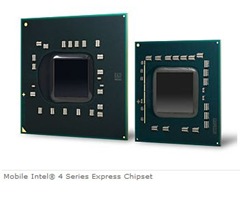If you’ve had some pain fixing a Windows issue, I’m sure you’ve heard of the word “Linux” from one of the other “geeks” that visit around forums, helping people out. Linus Trovalds was the person who started the Linux operating system project and owns the copyright to the name, “Linux”. Recently when discussing a security issue in the Linux kernel, Linus did some disrespectful “name-calling” in a public readable mailing list.
people out. Linus Trovalds was the person who started the Linux operating system project and owns the copyright to the name, “Linux”. Recently when discussing a security issue in the Linux kernel, Linus did some disrespectful “name-calling” in a public readable mailing list.
The following is an excerpt from the mail:
Security people are often the black-and-white kind of people that I can't stand. I think the OpenBSD crowd is a bunch of masturbating monkeys, in that they make such a big deal about concentrating on security to the point where they pretty much admit that nothing else matters to them.
Linus is known to be a little outspoken and as a person who can be little rude at times, but when you treat other competitive developers with so much disrespect, it obviously means there is something wrong with him or his team. Linus invented the Linux OS, but today there are lots of other developers who are working hard towards improving Linux. The other developers do all the hardwork these days and Linus just supervises and controls which patches are to be applied to the kernel and what direction the Linux kernel should follow.
Look at the backdrop of events happening at Linux and OpenBSD, you’ll realize why Linus is a little upset with OpenBSD/BSD in general. The last release of FreeBSD v7.0, which is based on OpenBSD’s trunk4 and is a spectacular release with performance better than Linux on most grounds. Also, a lot of other Linux developers are in constant debate with Linus on what direction Linux should take. Someday its about the schedular or one day its about the security. There is some unrest in the Linux community, which feels the desktop neglect in terms of efforts in the kernel.
You can read his insane reply here and the whole discussion here.
But whatever the problem, such harsh words are completely unacceptable from the leader of such a big community of developers and users. Linus definitely needs some spiritual counselling to heal his internal turmoil.







 been implementing web standards quite quickly compared to other popular browsers. And so was the case with Gmail, where Opera users had to use the ”nocheckbrowser” parameter to see the newer Gmail2 interface. But that’s no more required, since Google has made changes and now Opera 9.51 and higher displays the new Gmail2 interface by default.
been implementing web standards quite quickly compared to other popular browsers. And so was the case with Gmail, where Opera users had to use the ”nocheckbrowser” parameter to see the newer Gmail2 interface. But that’s no more required, since Google has made changes and now Opera 9.51 and higher displays the new Gmail2 interface by default.


 11 in about 2 weeks at
11 in about 2 weeks at 
 services benchmark known as Reuters Market Data System 6.0.3 (RMDS).
services benchmark known as Reuters Market Data System 6.0.3 (RMDS).